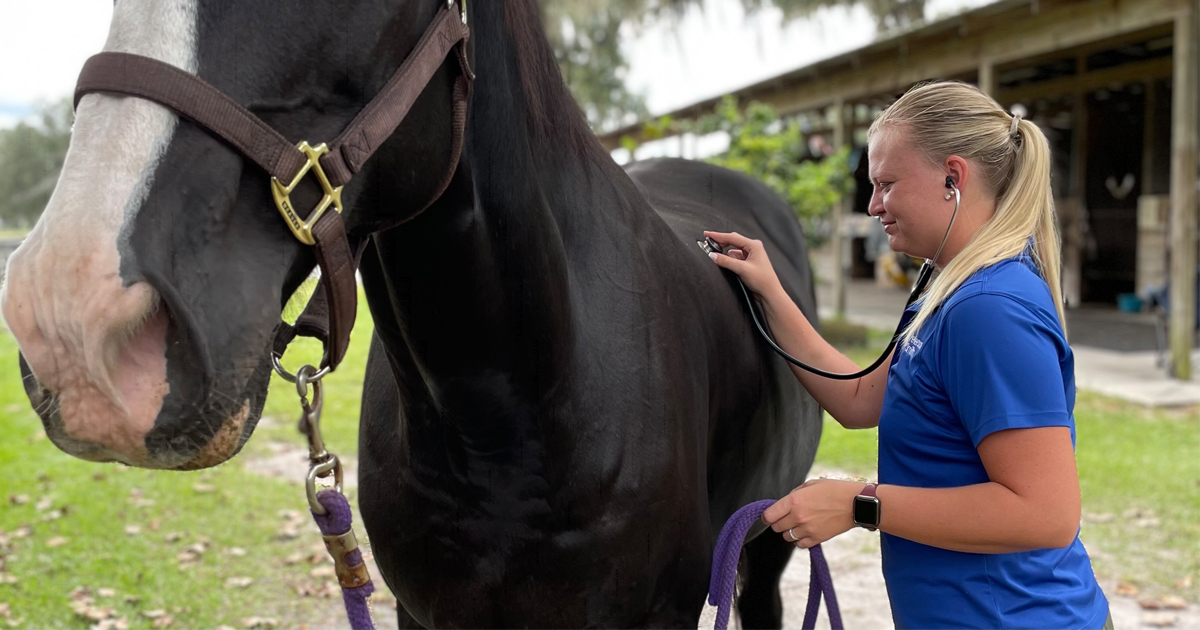Written by Dr. Jessica Reynolds
2021-2022 Peterson Smith Equine Hospital + Complete Care Ambulatory Intern
What is EIPH?
Exercise induced pulmonary hemorrhage is a condition that causes blood in the airways and occurs after intense exercise. Typically, it is known as blood coming from the nostrils (epistaxis).
How common is it?
It is most commonly associated with racehorses, but can also be seen with high intensity training of any discipline. Only 0.54% of horses with EIPH have a bloody nose after exercise. Whereas, 55% of horses will have blood in their trachea, which cannot be seen externally.
What causes EIPH to happen?
Essentially, when a horse is galloping and performing at its maximum the heart increases the amount of work (pressure) to help deliver oxygenated blood to the body. While this is happening, the pressure within the lung’s capillaries increase which causes these capillaries to fail and rupture. When these capillaries rupture it causes the blood to travel through the airways, trachea, and in a small amount of cases out the nasal passage.
What are the clinical signs associated with EIPH?
There usually are no clinical signs associated EIPH. If the horse is noted to swallow excessively after exercise this could be an indication it is present. In a small percentage of cases, there will be epistaxis within 30-90 minutes after exercise. Poor performance and collapse and death are both uncommonly associated.
How is EIPH diagnosed?
Endoscopy is the most commonly used diagnostic tool, which allows us to visualize the blood in the upper airway. It is essential to determine the cause of blood in the upper airway if seen because there are a few other conditions that can cause this as well such as an ethmoid hematoma and guttural pouch mycosis.
A bronchoalveolar lavage can also be performed, which is how a sample of fluid and cells is obtained to look at under the microscope to determine the cell types and contents within the airway.
What does treatment look like?
If any underlying diseases are present, they must be treated. An example of this would be equine asthma. Rest (4-12 weeks) has also been proven to be beneficial as well as increasing the interval between races.
As far as medications are concerned Furosemide is the only proven medication to reduce the amount of hemorrhage within the airway. This works by decreasing the pressure within the lung capillaries. It is controversial to use this drug because it has been shown to be performance enhancing. Nasal strips have also been reported to have mixed efficacy as well.
Alternative drugs have not demonstrated to have a therapeutic benefit.
References:
- Rush, B. (2014) The Merck veterinary manual. 9th Whitehouse Station, N.J.
- Smith, B. (2015) Large Animal Internal Medicine. 5th Mosby.




